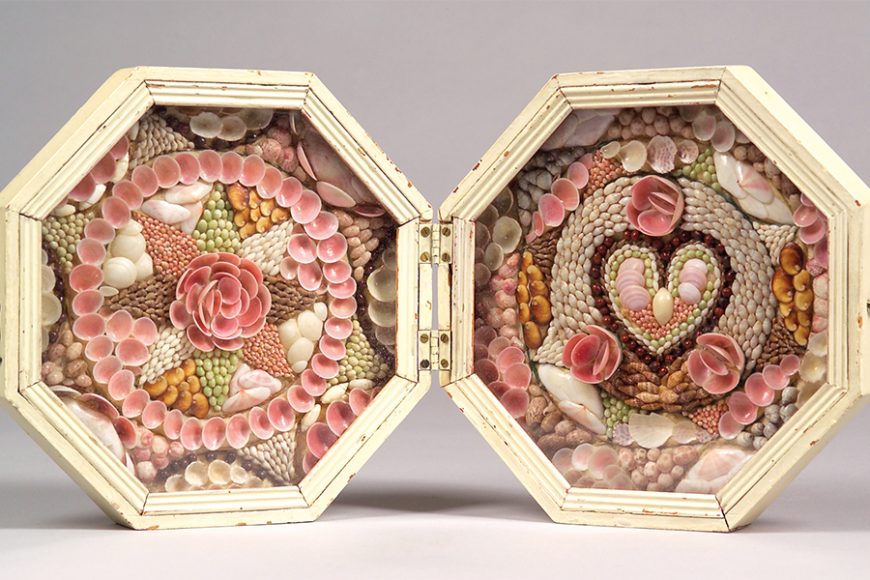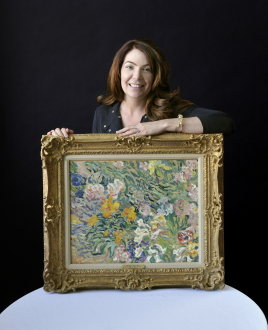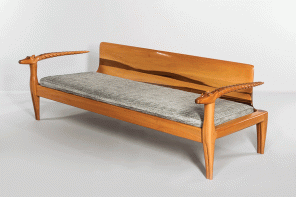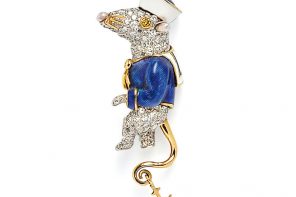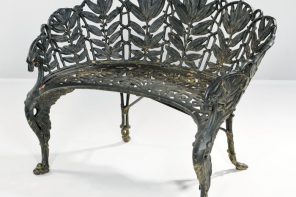The origins of Valentine’s Day as an occasion for exchanging tokens of affection dates from at least the Middle Ages. The English poet Geoffrey Chaucer mentioned Feb. 14 as a day for romance because it was widely believed to be the date when birds began to choose their mates. That sentimental tradition has continued to flourish.
At first, Valentine’s Day was marked with handwritten notes and poems and the exchange of small keepsakes. The Victorian age gave fuller rein to the expression of romantic feelings. Colorful printed cards and more elaborate gifts became widespread. Among the most appealing examples of this new emotional openness are the shell mosaics known today as sailors’ valentines.
Originally made mainly between the 1830s and 1900, these sentimental souvenirs are treasured survivors today. They are readily recognized by the materials, seashells less than ½ inch in size, and the size and shape of the finished items, generally 8 to 12 inches across in octagonal, glass-covered wooden frames a couple of inches deep.
Most valentines were made in pairs, hinged together on one side. When the clasp was released, the case opened to reveal symmetrical patterns composed of dozens of small shells glued on a backing of cotton batting. Often the design included a central motif such as a heart, anchor or compass rose, or a sentimental motto like “Forget Me Not” or “A Token of Affection.”
Research has shown that these ingenious examples of folk art were rarely if ever made by the sailors themselves. Nor were they presented to sweethearts, wives or favorite female relatives on Valentine’s Day, unless the giver happened to arrive home in mid-February. The true story behind sailors’ valentines is even more intriguing.
The 19th century was an age of discovery. Science blossomed, natural history was all the rage and travel became easier. These trends combined to make collecting of all kinds popular and one favorite category was shell collecting. It even had a name — conchylomania. Some of these sandy souvenirs were used for hobby and decorative purposes, including combining them into mosaic-like geometric patterns.
At the same time, large numbers of men were engaged in maritime occupations — whaling, fishing, trading and exploring. After a long period away from home, many seafarers wanted to return with colorful souvenirs for the women who had waited anxiously ashore.
As far back as the 1600s, the West Indies island of Barbados was one of the most important ports of call in the busy Caribbean Sea. Merchant sailors, whalers and yachtsmen stopped to trade, sightsee and shop. One particularly popular store was Belgraves New Curiosity Shop in Bridgetown.
Surviving newspaper advertisements for the business from the later 1800s feature “Marine Specimens and Native Manufactures in Fancy Work” as a tempting gift idea for last-minute shoppers who didn’t want (or dare) to return home empty-handed. In fact, the Belgrave brothers’ emporium met many of the same needs as today’s airport store.
Just such a newspaper clipping was discovered in the 1960s by a restorer working on a sailor’s valentine. Further research made it clear that most of these shell creations were commercially made and purchased at Belgraves and similar shops.
Many Barbados women were of English descent and familiar with designs for fancy needlework that could be adapted to working with tiny shells. They developed a thriving cottage industry making and selling these distinctive souvenirs.
The island origin of the valentines is further proven by the fact that while there are hundreds of thousands of different species of shells, only about three dozen were used in sailors’ valentines. And those species are all native to the West Indies.
Occasionally shells from other places, mainly Indonesia, are found in antique sailors valentines, but they are fairly rare exceptions. Those Indonesian shells were imported to America and Europe by a London-based entrepreneur whose family business eventually moved from shipping shells to transporting petroleum. The company name today is Shell Oil, the U.S.-based wholly owned subsidiary of Royal Dutch Shell.
The majority of valentine greetings today are purchased by women. The surviving sailors valentines are enduring and endearing reminders of the era when “A Token of Esteem” painstakingly worked in tiny seashells was a heartfelt gift from a returning seafarer.
For more, contact Katie at kwhittle@skinnerinc.com or 212-787-1114.

